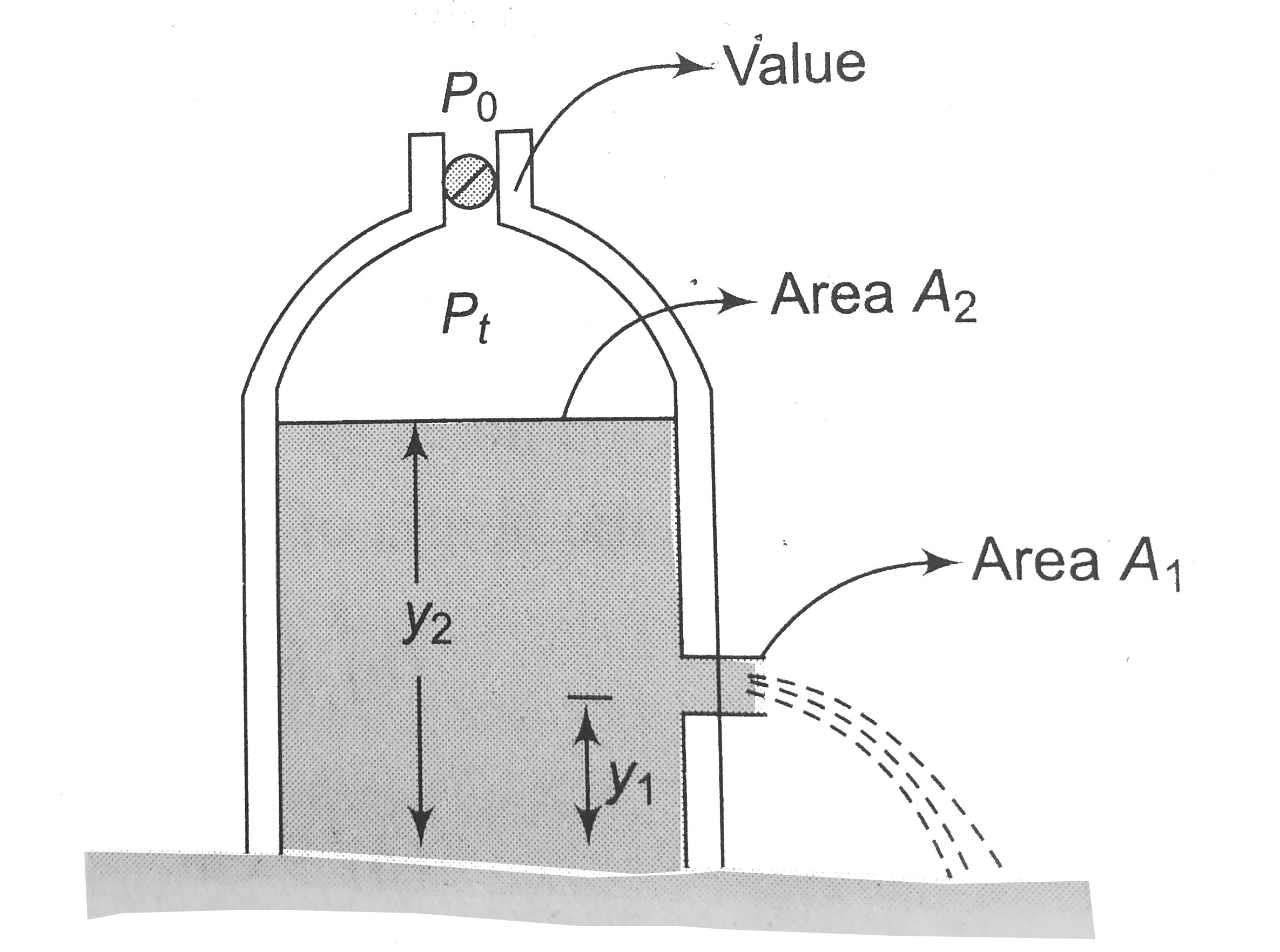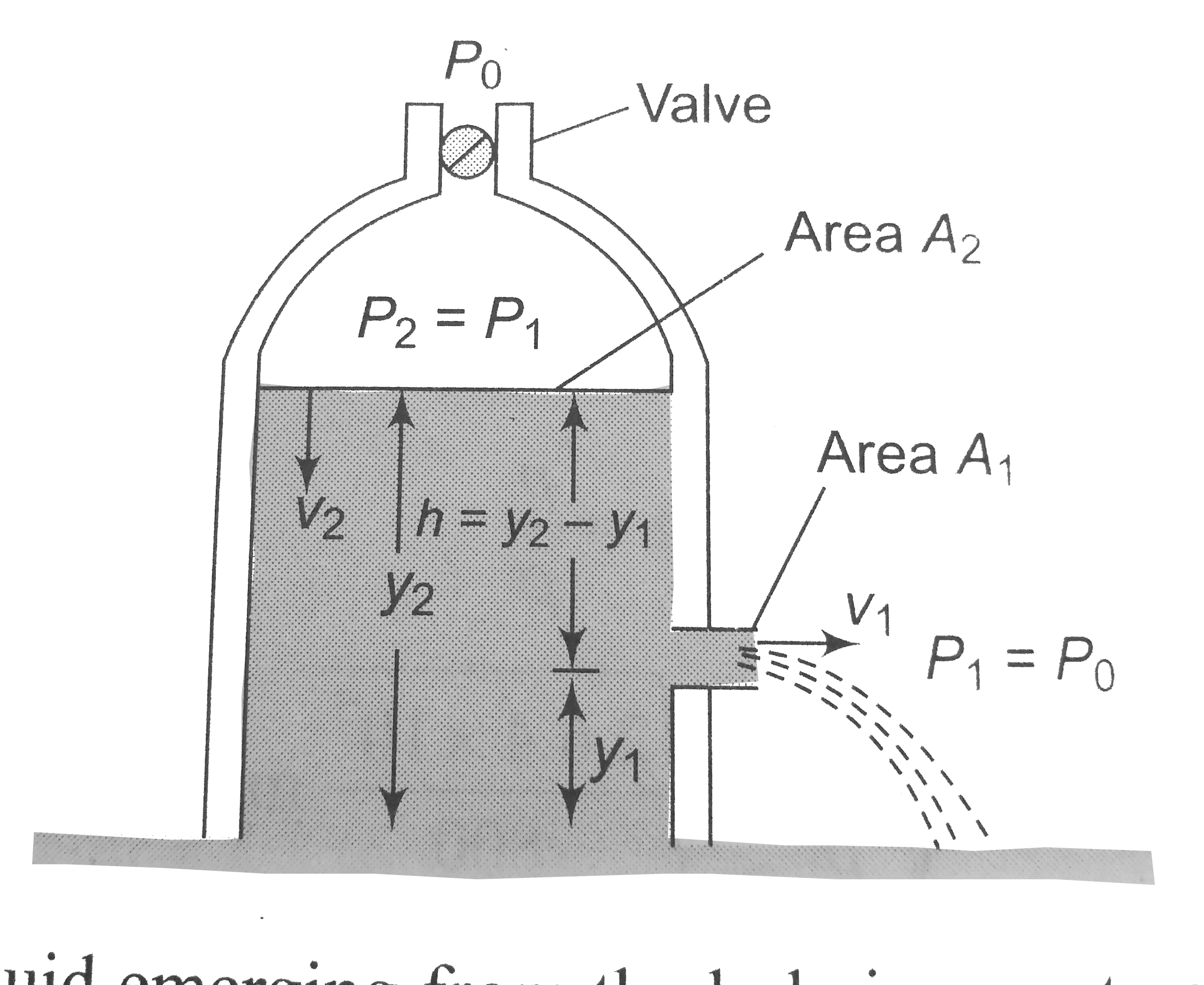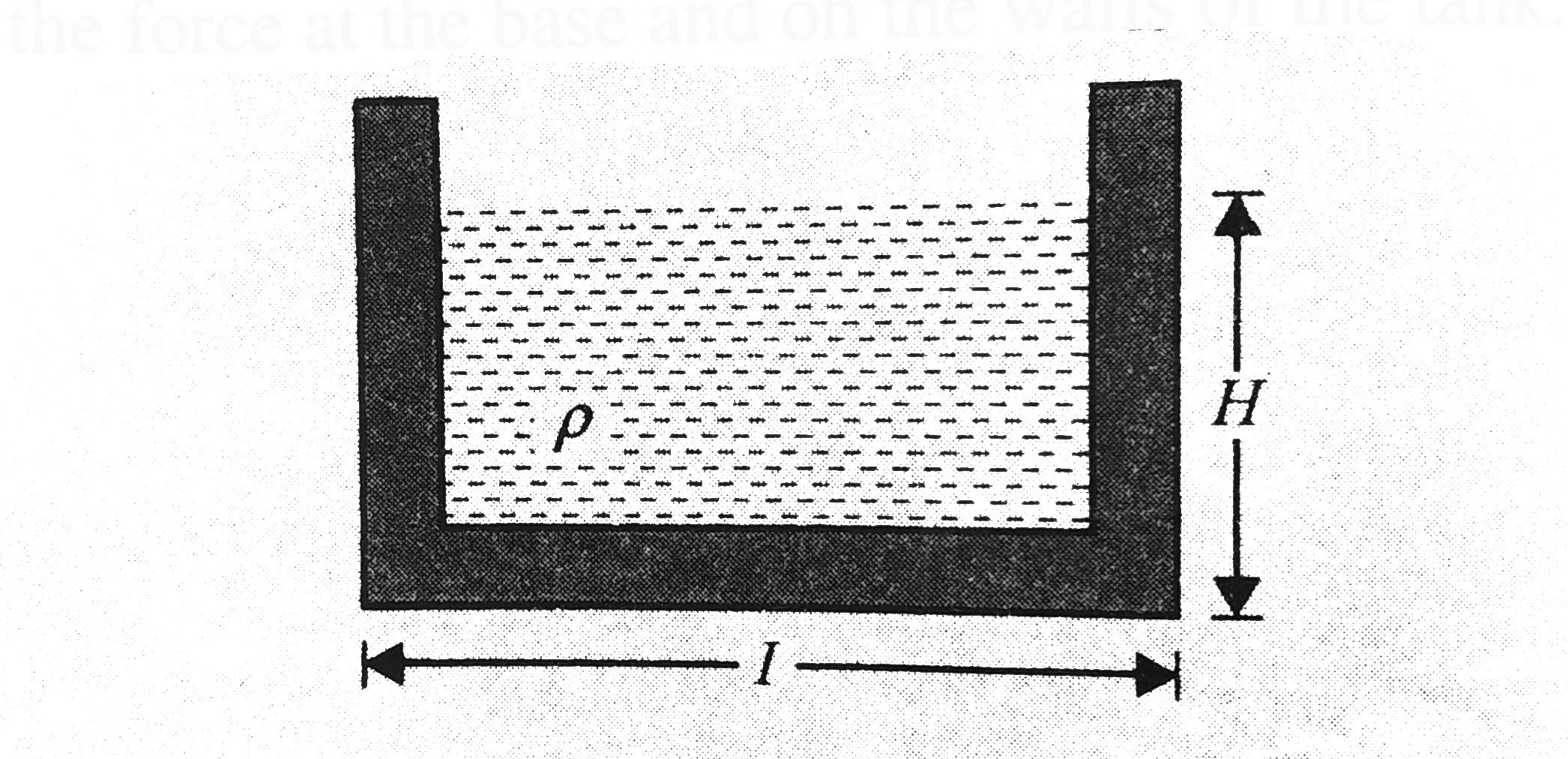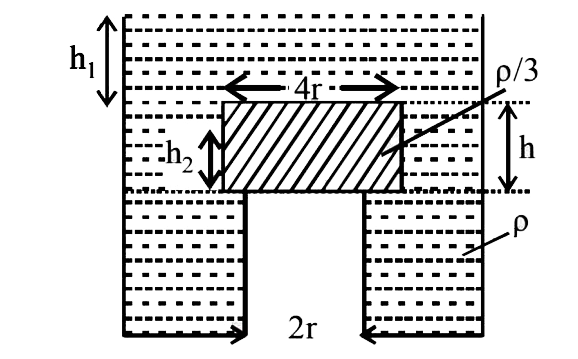A tank has a small hole on its side at a height y1. It is filled with a liquid (density ρ) to a height y2. If the absolute pressure at the top of the fluid is Pt, find the velocity with which it leaves the tank. Assume that the cross-sectional area of the tank is larger as compared to that of the hole.

√2(Pt−P0)ρ+2g(y2−y1)
√Pt−P0ρ+2g(y2−y1)
√Pt−P0ρ−2g(y2−y1)
√2Ptρ+2g(y2−y1)
The correct Answer is:A
From equation of continuity, v2=A1A2v1
Since A1<<A2,v2 must be very small compared to velocity of efflux at the hole, therefore we can take v2=0
Fluid emerging form the holes is open to atmosphereic pressure P0. we take two points A and B at the top of the fluid and at the hole respectively. From Bernoulli's principle,
P0+12ρv21+ρgy1=P1+ρgy2
Solving for v1, we obtain v1=√2(pt−p0)ρ+2gh.

Topper's Solved these Questions
- FLUID MECHANICSBook:A2ZChapter:FLUID MECHANICSExercise:Problems Based On Mixed Concepts
Explore 29 Videos
- FLUID MECHANICSBook:A2ZChapter:FLUID MECHANICSExercise:Assertion Reasoning
Explore 15 Videos
- FLUID MECHANICSBook:A2ZChapter:FLUID MECHANICSExercise:Continuity Equation And Bernoulli'S Theorem
Explore 32 Videos
- GENERAL KINEMATICS AND MOTION IN ONE DIMENSIONBook:A2ZChapter:GENERAL KINEMATICS AND MOTION IN ONE DIMENSIONExercise:Chapter Test
Explore 30 Videos
Similar Questions
Consider a regular tank of size (l×b) filled with a liquid of density ρ to a height H as shown in figure. Find the force at the base and on the wall of the tank.

View SolutionA tank is filled with a liquid upto a height H, A small hole is made at the bottom of this tank Let t1 be the time taken to empty first half of the tank and t2 time taken to empty rest half of the tank then find t1t2
View Solution
Knowledge Check
A tank has a small hole on its side at a height y1. It is filled with a liquid (density ρ) to a height y2. If the absolute pressure at the top of the fluid is Pt, find the velocity with which it leaves the tank. Assume that the cross-sectional area of the tank is larger as compared to that of the hole.
 A√2(Pt−P0)ρ+2g(y2−y1)B√Pt−P0ρ+2g(y2−y1)C√Pt−P0ρ−2g(y2−y1)D√2Ptρ+2g(y2−y1)
A√2(Pt−P0)ρ+2g(y2−y1)B√Pt−P0ρ+2g(y2−y1)C√Pt−P0ρ−2g(y2−y1)D√2Ptρ+2g(y2−y1)A hole is made at the bottom of the tank filled with water (density =1000kgm−3). If the total pressure at the bottom of the tank is three atmospheres (1 atmosphere =105Nm−2), then the velocity of efflux is nearest to
A√400ms−1B√200ms−1C√600ms−1D√500ms−1A cylindrical tank has a hole of diameter 2r in its bottom. The hole is covered wooden cylindrical block of diameter 4r, height h and density ρ/3.

Situation I: Initially, the tank is filled with water of density ρ to a height such that the height of water above the top of the block is h1 (measured from the top of the block).
Situation II: The water is removed from the tank to a height h2 (measured from the bottom of the block), as shown in the figure. The height h2 is smaller than h (height of the block) and thus the block is exposed to the atmosphere.
Find the minimum value of height h1 (in situation 1), for which the block just starts to move up?A(a) 2h3B(b) 5h4C(c) 5h3D(d) 5h2
Calculate the velocity with which a liquid emerges from a small hole in the side of a tank of large cross-sectional area if the hole is 0.2 m below the surface liquid (g = 10 ms−2.
View SolutionA tank of square cross-section of each side is filled with a liquid of height h . Find the thrust experienced by the vertical surfaces and bottom surface of the tank.
View SolutionA cylindrical tank of cross sectional area a1 is filled with water to a height h. A hole of cross sectional area a2 is made at the bottom. If a1=5a2, then find the
(i) initial velocity with which the water falls in tank.
(ii) initial velocity with which water emerges out from hole.
(iii) time taken to make the tank empty.
View SolutionA cylindrical tank has a hole of diameter 2r in its bottom. The hole is covered wooden cylindrical block of diameter 4r, height h and density ρ/3.

Situation I: Initially, the tank is filled with water of density ρ to a height such that the height of water above the top of the block is h1 (measured from the top of the block).
Situation II: The water is removed from the tank to a height h2 (measured from the bottom of the block), as shown in the figure. The height h2 is smaller than h (height of the block) and thus the block is exposed to the atmosphere.
In situation 2, if h2 is further decreased, then
View SolutionA tank full of water has a small hole at its bottom. Let t1 be the time taken to empty the first half of the tank and t2 be the time needed to empty the rest half of the tank, then
View Solution
